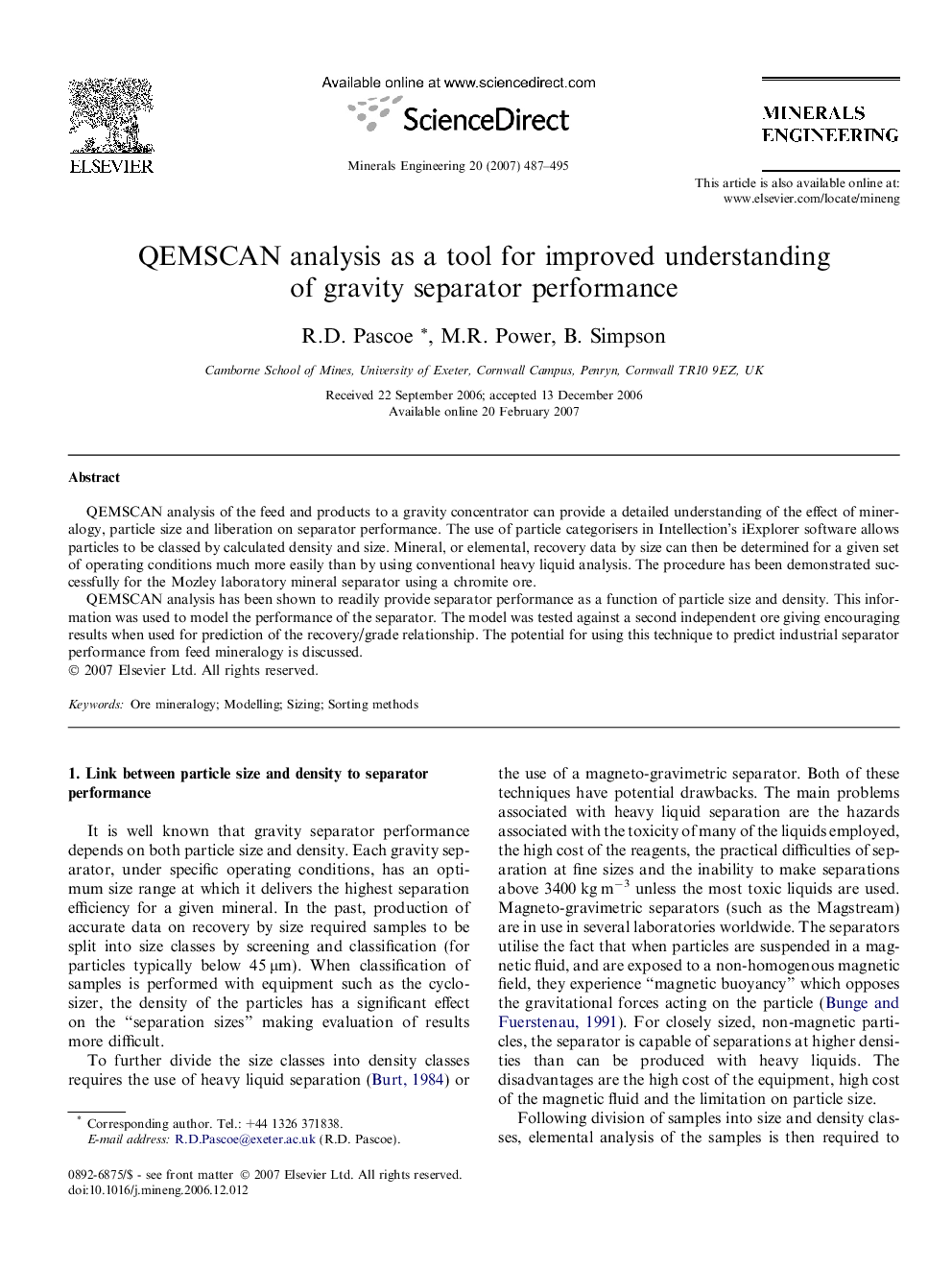| Article ID | Journal | Published Year | Pages | File Type |
|---|---|---|---|---|
| 234389 | Minerals Engineering | 2007 | 9 Pages |
QEMSCAN analysis of the feed and products to a gravity concentrator can provide a detailed understanding of the effect of mineralogy, particle size and liberation on separator performance. The use of particle categorisers in Intellection’s iExplorer software allows particles to be classed by calculated density and size. Mineral, or elemental, recovery data by size can then be determined for a given set of operating conditions much more easily than by using conventional heavy liquid analysis. The procedure has been demonstrated successfully for the Mozley laboratory mineral separator using a chromite ore.QEMSCAN analysis has been shown to readily provide separator performance as a function of particle size and density. This information was used to model the performance of the separator. The model was tested against a second independent ore giving encouraging results when used for prediction of the recovery/grade relationship. The potential for using this technique to predict industrial separator performance from feed mineralogy is discussed.
